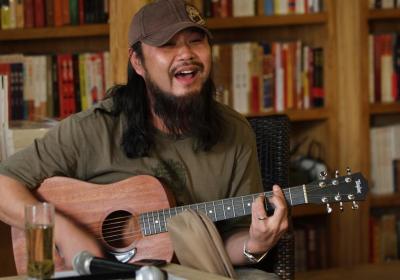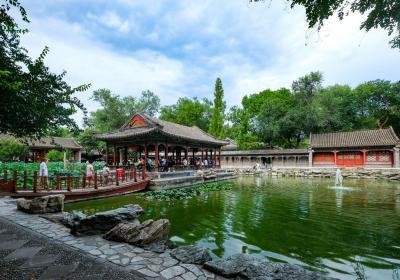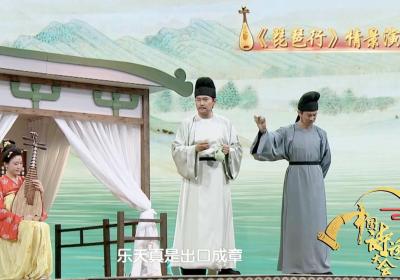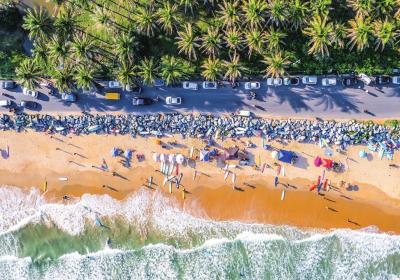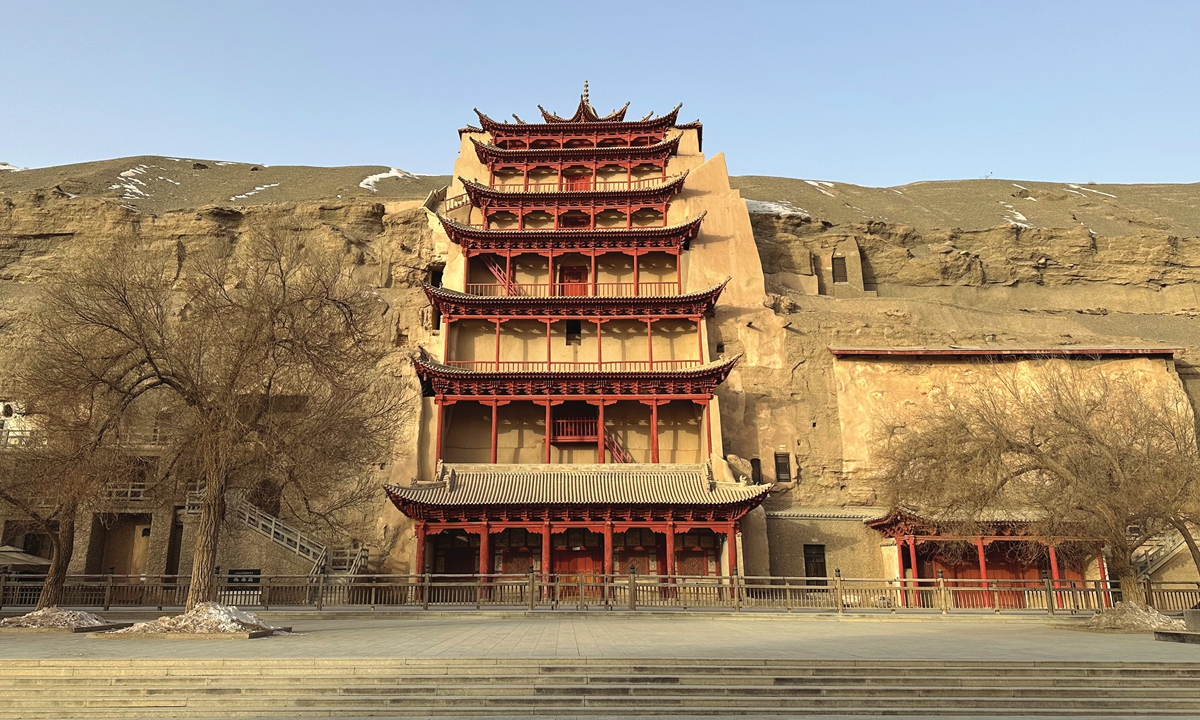
The Nine-Story Temple in the No.96 Mogao Caves
In a symphony of relentless dedication to the protection, research and promotion of Dunhuang culture, a triumphant endeavor has unfolded over generations within the UNESCO World Heritage site known as the Mogao Caves.
With the oldest cave dating back 1,657 years and the newest 7-8 centuries, these ancient caves resemble weathered elders in need of meticulous care, thorough research and the vigorous revival of Dunhuang culture.
Su Bomin, the director of the Dunhuang Academy, shared insight into the endeavors and innovations of the new generation of scholars devoted to these tasks.
However, an unalterable natural law prevails: The Mogao Caves are gradually aging. Su affirmed that the primary goal is to use scientific protection measures to prolong their lifespan and subsequently conduct in-depth research and promote the Dunhuang culture.
Scientific foundation Recently, China's cultural heritage preservation authorities issued guidance for prioritizing scientific methods in cultural relic preservation.
Su, a chemist by profession and expert in cultural relic technology who joined the academy in 1992 when the laboratory was relatively rudimentary, said his initial task was to analyze the pigment composition of the murals within the caves.
"By studying their discoloration, we have discovered a correlation with factors such as air, environment, light and humidity," Su said.
"This knowledge allows us to sufficiently prevent these major factors from further affecting the pigments."
Besides discoloration, efflorescence, or salt crystallization, is another major threat to the murals, which is why it is often referred to as a "cancer" for murals.
Through a seven-year collaboration with the Getty Conservation Institute in the US on the restoration and protection of the No.85 Cave starting from 1997, Su's team identified the culprit behind efflorescence "after more than 80 attempts" and developed innovative techniques to control it.
Efflorescence is caused by the presence of soluble salts in the supporting layer (cave rock wall) and ground layer (grass mud layer) of the murals, which absorb moisture from the air. When exposed to dry air, the salt in the moisture recrystallize into white particles.
The repeated soluble salt crystallization damages the ground and painted layers of the murals.
"We, along with the US experts, developed a desalination technology that reduces the salt content in the ground and painted layers," he said.
"This significantly lessened the impact air humidity fluctuations had on the murals. The desalination technology is a milestone in the history of mural protection in China."
Su emphasized the significance of science and technology in the success of the academy, stating, "It has become a consensus within the Dunhuang Academy to introduce scientific principles and technology needed for cultural relic protection."
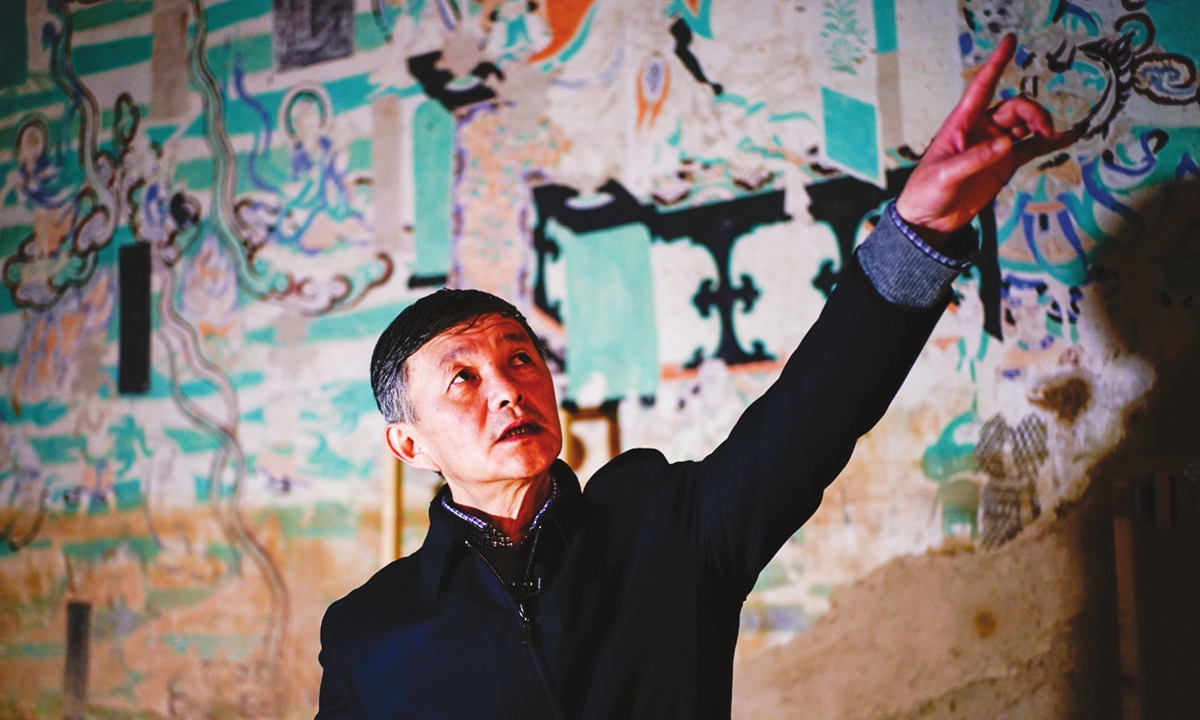
Su Boming Photos: Courtesy of Dunhuang Academy
Balancing preservation, tourism
The focus in Mogao Caves protection has shifted from salvaging the relics to preventing future degradation, according to Su.
"Our future emphasis is on preventive protection, which includes establishing a scientific management model and continuing in-depth research into the natural environmental changes of ancient sites, followed by implementing protective measures," he said.
The Dunhuang Academy has developed a tourist management model at the Mogao Caves aimed at minimizing damages to the caves while ensuring a positive experience for visitors.
Through scientific research and practical exploration, the academy has now adopted a tourism management model for the Mogao Caves that makes use of online reservations, digital displays and cave exploration.
In peak tourist seasons, popular attractions often suffer from overcrowding, hindering the visitor experience and putting significant pressure on heritage sites.
To strike a balance between relic protection and visitor experience, Su said that the Mogao Caves commissioned a "visitor capacity study" in 2002 in collaboration with the Getty Conservation Institute and the Australian Heritage Commission, which aimed to assess and analyze the maximum number of visitors the caves could accommodate in a day.
The results indicated that Mogao Caves' maximum daily visitor capacity is 6,000 people. The upper limits of cave microenvironment control were also determined: Cave humidity should not exceed 62 percent, and carbon dioxide levels should not exceed 1,500 ppm.
The site now features real-time monitoring instruments in all the caves, displaying microenvironmental conditions on a large screen at the monitoring center.
In 2010, the 34th session of the World Heritage Committee reported that the Mogao Caves' heritage tourism management method established a "highly significant" model that it recommended for other world heritage sites.
The Dunhuang Academy also embarked on digital exploration in the late 1980s, aiming to achieve permanent preservation and sustainable use of the Mogao Caves through digital means.
Su revealed that this endeavor has been a great success.
A digitalized version of the Mogao Caves was inscribed on the UNESCO Memory of the World Register in 2013. The digital preservation of the site consists of two main aspects: 3D scanning of the grottoes and the construction of a digital database.
"In the early 1990s, with the development of computer technology, we began to use 3D laser scanning to scan various grottoes. In 1999, we carried out a comprehensive 3D scanning project for the entire Mogao Caves, creating a digital database," Su said.
This digital database serves multiple purposes, as it facilitates virtual visits to the caves, enabling people worldwide to explore the magnificent artworks without physically entering the caves while it also serves as a valuable resource for research and restoration efforts.
Moreover, the digitalization effort extends beyond the Mogao Caves to encompass other historical sites in Dunhuang, forming a comprehensive digital Dunhuang platform.
Future prospectsDunhuang culture is not confined to the borders of China; it has global significance. Su emphasized the importance of international collaboration in the preservation of Dunhuang culture.
The Dunhuang Academy has engaged in extensive international cooperation, collaborating with organizations such as the Getty Conservation Institute.
Su expresses gratitude for the support received from its international partners.
"The Getty Conservation Institute, for example, has provided us with many important achievements and technologies. We've collaborated for more than 30 years, and it has been a very successful and harmonious partnership," he said.
Looking to the future, Su envisions continued collaboration with international partners, emphasizing the need for a collective effort in preserving global cultural heritage.
"Dunhuang culture has the charm that attracts people from all over the world. We hope that through our joint efforts, the charm of Dunhuang culture will continue to radiate and resonate globally," he said.


